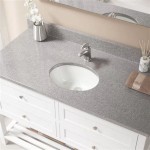Does Every Bathroom Need a Vent?
The presence of a vent in a bathroom is a common feature in many homes. While it might seem like a necessity, the question arises: does every bathroom truly require a vent? The answer is not as straightforward as a simple yes or no. The need for a bathroom vent depends on various factors, encompassing building codes, bathroom size, and the amount of moisture generated within the space. This article will delve into the complexities of bathroom ventilation, exploring the benefits and drawbacks of having a vent, and outlining the situations where a vent might be necessary.
Understanding the Role of Bathroom Ventilation
The primary purpose of a bathroom vent is to remove moisture from the air. Bathrooms, by their nature, generate a significant amount of moisture due to activities like showering, bathing, and using the toilet. This moisture can lead to various issues, including:
- Mold and Mildew Growth: Moisture creates a conducive environment for mold and mildew to thrive, posing health risks, particularly for individuals with allergies and respiratory issues.
- Wood Rot: Excessive moisture can damage wooden structures, leading to rot and structural instability.
- Musty Odors: Moisture trapped in the bathroom can contribute to unpleasant, damp odors.
- Condensation on Walls and Windows: Excessive moisture can lead to condensation on walls and windows, ultimately causing damage and promoting the growth of mold.
A properly functioning bathroom vent helps mitigate these issues by removing moisture-laden air and replacing it with fresh, dry air.
Factors Determining the Need for a Bathroom Vent
The need for a bathroom vent is not a universal requirement. While some jurisdictions mandate ventilation in all bathrooms, other regions have more lenient regulations. Several factors influence the necessity of a vent, including:
1. Building Codes
Building codes vary across regions, and some jurisdictions require vents for all bathrooms, regardless of size or usage. It is crucial to consult local building codes to determine the specific requirements for ventilation in your area.
2. Bathroom Size and Usage
The size of the bathroom and the frequency of its use play a significant role in determining ventilation needs. Smaller bathrooms with infrequent use may not require ventilation as frequently as larger bathrooms with frequent use.
3. Moisture Generation
The amount of moisture generated within the bathroom is a key factor. Bathrooms with showers or bathtubs generate more moisture than those with toilets only. Additionally, prolonged showers or baths increase the amount of moisture in the air, necessitating more effective ventilation.
4. Natural Ventilation
The presence of windows in a bathroom can contribute to natural ventilation, reducing the need for mechanical ventilation. However, windows alone may not be sufficient to remove all the moisture generated, especially in larger bathrooms or during prolonged hot showers.
Alternatives to Traditional Bathroom Vents
While traditional bathroom vents are a common solution, alternative options are also available. These options can offer advantages in specific scenarios or for homeowners seeking more energy-efficient solutions:
1. Exhaust Fans
Exhaust fans are a common alternative to traditional vents. These fans directly expel moisture-laden air outside the bathroom, providing efficient ventilation. However, they require proper installation to ensure effective airflow.
2. Dehumidifiers
Dehumidifiers are particularly effective in reducing moisture levels, even in bathrooms without traditional vents. These devices remove moisture from the air, preventing mold and mildew growth.
3. Moisture-Resistant Materials
Utilizing moisture-resistant materials in bathroom construction can help minimize the impact of moisture. For instance, using moisture-resistant drywall and paint can reduce the risk of mold growth.
It is essential to note that these alternatives may not offer the same level of efficiency as traditional vents, and their effectiveness depends on the specific circumstances of the bathroom.
Ultimately, the need for a bathroom vent hinges on various factors, and a combination of these factors determines the best course of action. Consulting with a qualified professional to assess individual bathroom needs and local building codes is highly recommended to ensure proper ventilation and a healthy bathroom environment.
Does Every Toilet Need A Vent Pipe Quora

Plumbing Vents 101 What You Need To Know Innovative Pros Llc
Does Every Toilet Need A Vent Pipe Quora
Can You Vent A Toilet Line Through Sink Drain Quora

How To Vent Plumb A Toilet 1 Easy Pattern Hammerpedia
Does Every Toilet Need A Vent Pipe Quora

How To Vent Plumb A Toilet 1 Easy Pattern Hammerpedia

Plumbing Vents Common Problems And Solutions Family Handyman

How To Vent Plumb A Toilet 1 Easy Pattern Hammerpedia

How To Vent Plumb A Toilet 1 Easy Pattern Hammerpedia







